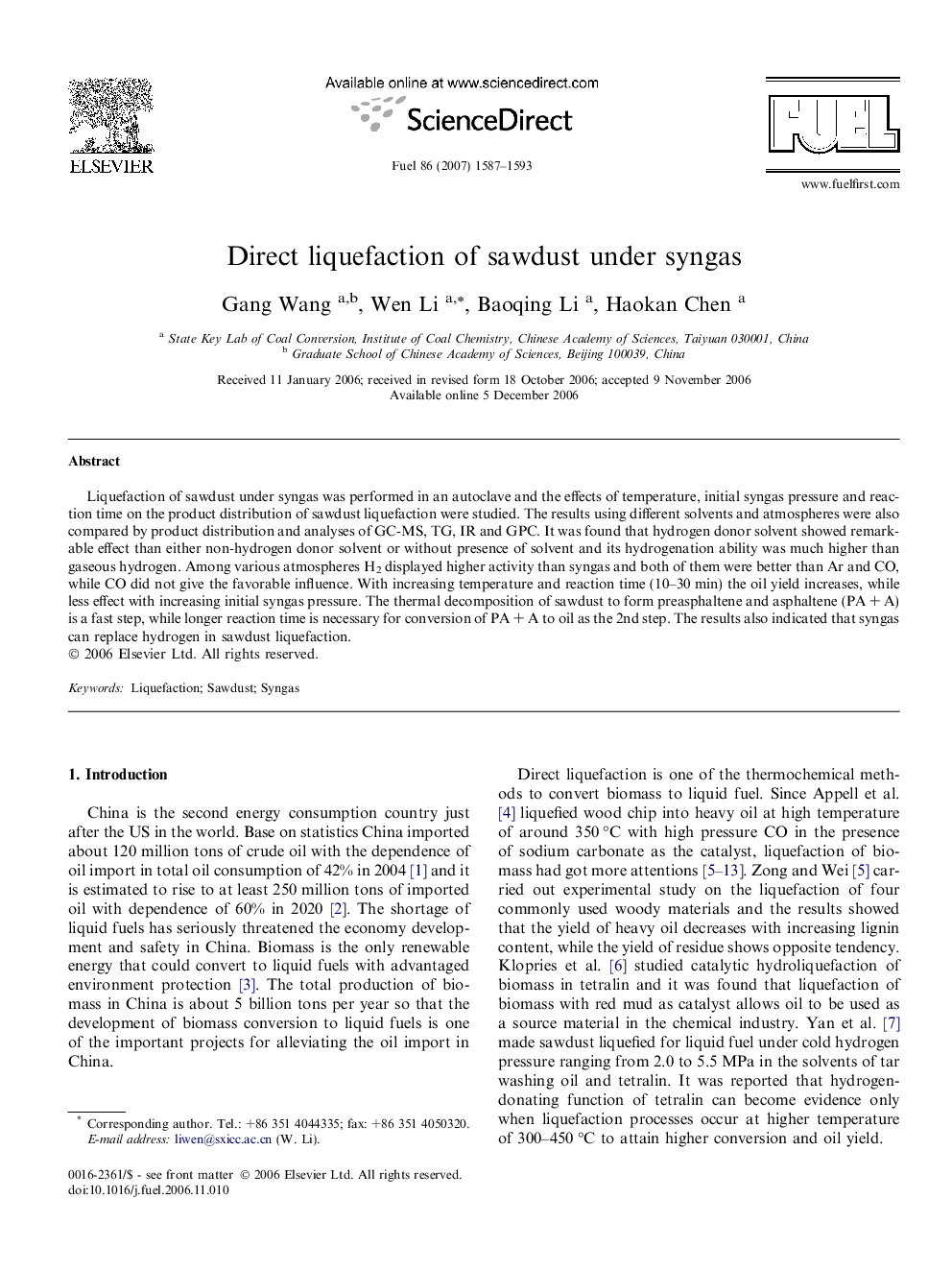| Article ID | Journal | Published Year | Pages | File Type |
|---|---|---|---|---|
| 207809 | Fuel | 2007 | 7 Pages |
Liquefaction of sawdust under syngas was performed in an autoclave and the effects of temperature, initial syngas pressure and reaction time on the product distribution of sawdust liquefaction were studied. The results using different solvents and atmospheres were also compared by product distribution and analyses of GC-MS, TG, IR and GPC. It was found that hydrogen donor solvent showed remarkable effect than either non-hydrogen donor solvent or without presence of solvent and its hydrogenation ability was much higher than gaseous hydrogen. Among various atmospheres H2 displayed higher activity than syngas and both of them were better than Ar and CO, while CO did not give the favorable influence. With increasing temperature and reaction time (10–30 min) the oil yield increases, while less effect with increasing initial syngas pressure. The thermal decomposition of sawdust to form preasphaltene and asphaltene (PA + A) is a fast step, while longer reaction time is necessary for conversion of PA + A to oil as the 2nd step. The results also indicated that syngas can replace hydrogen in sawdust liquefaction.
